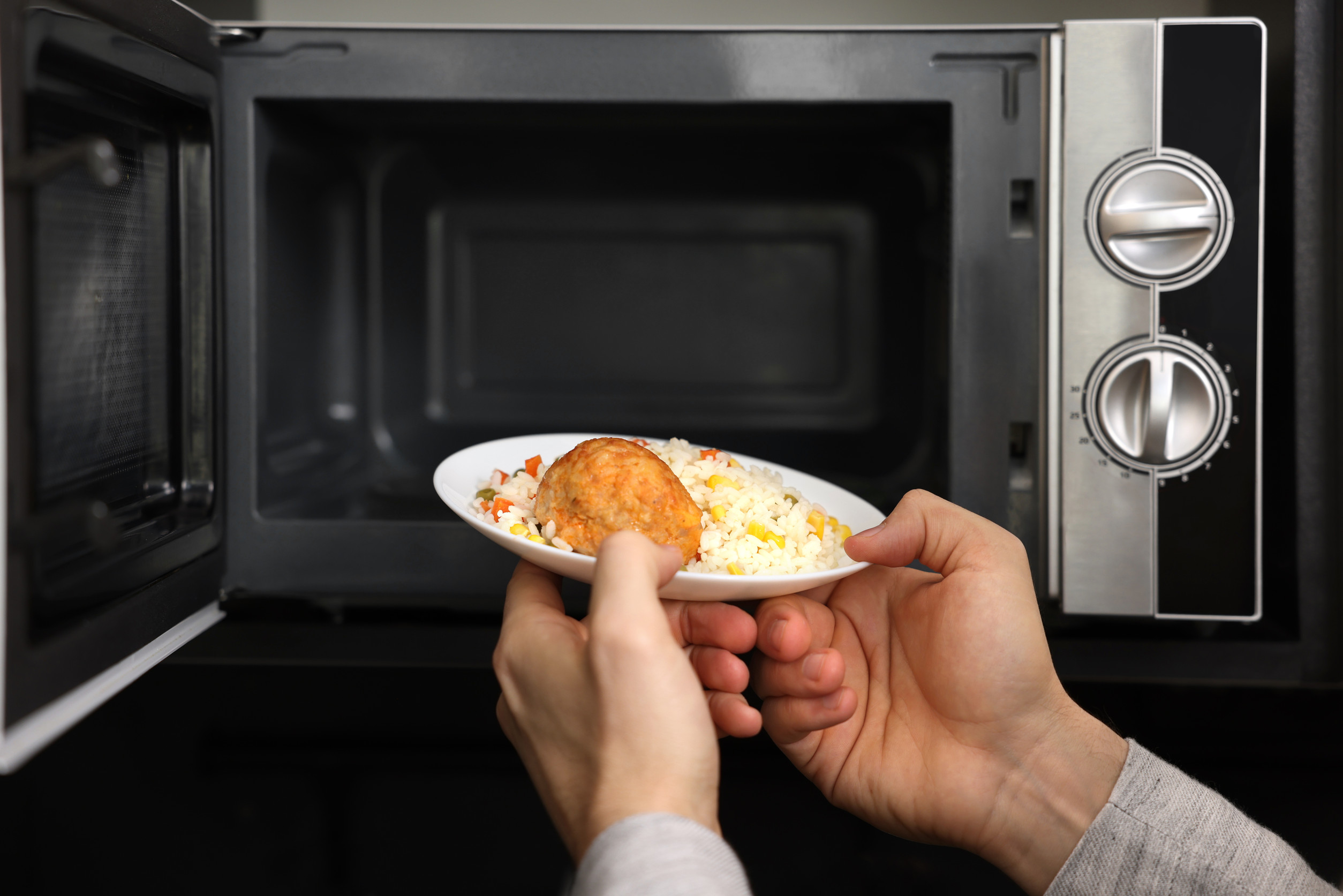
Image Source: 123rf.com
Microwaves make reheating quick and easy, but not every food is suited for the zap-and-go method. In fact, some items can change texture, lose flavor, or even pose safety risks when microwaved. Food manufacturers often include warnings for specific products because the results can be unappetizing—or worse, dangerous. Ignoring those recommendations can lead to messy explosions, nutrient loss, or even burns. Here are 10 foods you shouldn’t microwave, according to manufacturers, and why following their advice matters.
1. Hard-Boiled Eggs
Manufacturers warn that microwaving whole hard-boiled eggs can cause them to explode. The rapid heating builds up steam inside the shell, and without a way to escape, it bursts. Even peeled eggs can burst if the interior heats unevenly. The safest method is to reheat eggs by placing them in hot water for a few minutes instead. This keeps the texture intact and avoids a potential mess—or injury.
2. Grapes
Some fruit companies specifically caution against microwaving grapes because they can create plasma arcs inside the microwave. The sugars and moisture in grapes heat rapidly, and when two grape halves are close together, they can produce small sparks. This can damage your appliance and create a fire hazard. The phenomenon is so well-documented that scientists have studied it. If you want warm grapes for a recipe, it’s better to heat them on the stove.
3. Frozen Meat Straight from the Freezer
Many meat producers recommend thawing meat in the refrigerator or with the defrost setting instead of blasting it on high in the microwave. Heating frozen meat unevenly can cause parts of it to cook while other parts remain frozen, creating a breeding ground for bacteria. This is especially risky with poultry, which must be fully cooked to safe internal temperatures. Manufacturers stress that controlled thawing preserves texture and flavor. Planning ahead is the best way to avoid this problem.
4. Breast Milk
Breast milk storage guidelines clearly advise against microwaving because it can create hot spots that burn a baby’s mouth. It can also break down valuable nutrients and antibodies. Manufacturers of breast milk storage bags and bottles include this warning on packaging. Instead, warming breast milk in a bowl of warm water is recommended. This method heats the milk gently and evenly.
5. Processed Meats
Hot dogs, bacon, and sausages may seem microwave-friendly, but some brands warn against it due to uneven heating. Microwaving can cause fats to splatter and create rubbery or dried-out textures. There’s also a risk of harmful compounds forming when processed meats are heated too quickly at high temperatures. Manufacturers recommend stove-top or oven reheating for better taste and safety. Taking a few extra minutes can make a big difference.
6. Leafy Greens
Certain leafy greens, like spinach and kale, can release nitrates when microwaved. While these nitrates are naturally occurring, rapid heating may convert them into compounds that some health experts suggest avoiding in high amounts. Food packaging for frozen or pre-cooked greens often includes stovetop instructions instead of microwave directions for this reason. Microwaving can also make greens soggy and unappealing. Light sautéing preserves both flavor and texture.
7. Bread
Bread manufacturers often advise against microwaving bread for more than a few seconds. Microwaving causes the starches to gelatinize and then harden quickly, making the bread tough and rubbery. Instead, reheating bread in the oven or toaster restores its original crispness. If you must use the microwave, keep it to short bursts and consume immediately. Even then, it’s no match for oven-warmed bread.
8. Potatoes Without Piercing the Skin
Potato packaging often includes a note to pierce the skin before microwaving. Without ventilation, steam builds inside and can cause the potato to explode. This is both messy and dangerous. Piercing the skin with a fork allows steam to escape safely. Manufacturers recommend this step whether you’re cooking from raw or reheating leftovers.
9. Hot Peppers
Some pepper brands caution against microwaving because the heat releases capsaicin—the compound that makes peppers spicy—into the air. When microwaved, this vapor can irritate your eyes, throat, and skin when the door is opened. It’s similar to pepper spray in effect, which is not something you want in your kitchen. Cooking peppers on the stovetop in a well-ventilated area is much safer. Manufacturers include this warning to prevent accidental discomfort.
10. Styrofoam Containers with Food
While not a food itself, Styrofoam packaging is often used to store leftovers from restaurants. Many manufacturers print “Do Not Microwave” on the bottom because the material can melt and leach chemicals into the food. The microwave’s heat can warp the container and make it unstable. Transferring food to a microwave-safe dish before reheating is always the safer choice. This also helps food heat more evenly.
Following Warnings Can Save Your Meal—and Your Safety
Manufacturers don’t put microwave warnings on their products just for show. These guidelines are there to protect your health, preserve taste, and prevent damage to your appliances. Whether it’s avoiding explosions, keeping nutrients intact, or steering clear of harmful compounds, small adjustments can make a big difference. The microwave is a powerful tool, but it’s not the right choice for every food. Knowing what to skip ensures your kitchen stays safe and your meals stay delicious.
Have you ever ignored a “do not microwave” warning and regretted it? Share your story in the comments so others can learn from your experience.
Read More
